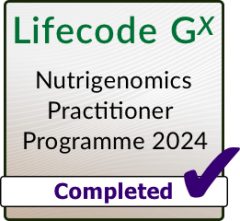Reference Number: 389
Year: 2002
Link: Link to original paper
Health: Cancer
Nutrition: Antioxidants | Fibre | Flavonoids | Prebiotic | Resistant starch | Short chain fatty acids
Summary
Early epidemiological studies indicated that populations that consume a high proportion of non-starch polysaccharide (NSP) dietary fibre (DF) in their daily diet suffer less from gastrointestinal diseases, in particular colorectal cancers, than populations that consume diets that are high in fat and protein but low in NSP fibre. In this respect, diet, by increasing the amount of vegetables and NSP DF’s, has been suggested to contribute as much as 25–35% to risk reduction for colorectal cancer. A reduction of fat intake may further reduce the risk by 15–25%. Based on these observations, DF’s and substances that are part of the fibre complex such as antioxidants, flavonoids, sulphur containing compounds and folate have been proposed as potentially protective agents against colon cancer. However, results from controlled prospective studies in which beta-carotene and vitamin E or isolated dietary fibres were given to high risk groups showed disappointing results. There are recent indications that the regular consumption of certain subclasses of highly fermentable dietary fibre sources result in gut associated immune and flora modulation as well as a significant production of short chain fatty acids. In vitro studies as well as animal studies indicate that in particular propionate and butyrate have the potential to support the maintenance of a healthy gut and to reduce risk factors that are involved in the development of gut inflammation as well as colorectal cancer. A suggestion put forward is that beneficial effects may be obtained in particular by the consumption of resistant starch (RS) because of the high yield of butyrate and propionate when fermented. These SCFA are the prime substrates for the energy metabolism in the colonocyte and they act as growth factors to the healthy epithelium. In normal cells butyrate has been shown to induce proliferation at the crypt base, enhancing a healthy tissue turnover and maintenance. In inflamed mucosa butyrate stimulates the regeneration of the diseased lining of the gut. In neoplastic cells butyrate inhibits proliferation at the crypt surface, the site of potential tumour development. Moreover, models of experimental carcinogenesis in animals have shown the potential to modify a number of metabolic actions and steps in the cell cycle in a way that early events in the cascade of cancer development may be counteracted while stages of progression may be slowed down. The present review highlights a number of these aspects and describes the metabolic and functional properties of RS and butyrate.
What does this mean for a baker?
This is an interesting study as it shows how increasing resistant starch in our food can have a huge impact on the diversity of the gut-microbiome. Resistant starch has been shown to increase the colonization of positive gut microbes as well as help to reduce blood sugar levels. Increasing the length of the fermentation process when baking sourdough can help to increase the amount of resistant starch in the bread.

